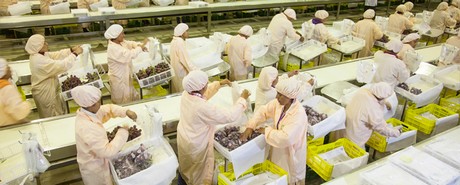 exporters of fresh grapes are celebrating that, as a result of the FTA with China, they will be able to export their fruits to the Asian market without paying tariffs.
exporters of fresh grapes are celebrating that, as a result of the FTA with China, they will be able to export their fruits to the Asian market without paying tariffs.Sandro Farfan, CEO of Provid Peru, stated that producers and exporters of fruit have benefited from the decline in tariffs, from 15% in 2010 to the current 3.9%.
"There will be an increase, obviously, because we've got to zero tariffs. It was a process that began with the signing of the free trade agreement with that country. China is currently our main market and, after signing an FTA, it will definitely continue to be so and it will continue to grow," said Farfan.
According to the CEO, China is Peru's primary target market as it accounts for 26% of the exports of Peruvian table grapes.
"The whole Asian region is important for us. Four of the top ten markets to which we send grape are Asian countries: China, Thailand, Indonesia, Korea," he said. "Obviously, the U.S. and Europe are still important markets for us," he added.
The United States is the second destination for Peruvian grapes, however, according to Farfan, "We'll have better opportunities of increasing our export volumes as a result of the Chinese decrease in tariffs. This is favourable for us."
Asked about the effect that this tariff reduction would have on producers and exporters, Farfan said that, "In recent years, there has been a steady growth in areas and new players have joined the sector. However, I think that the industry is mature enough and it should focus on the future. I also wonder if current production volumes will affect prices."
Farfan said the industry was getting ready to face this situation, and noted that Peru had exported 150,000 tons of fruit during the previous season and, up to date, has exported 220,000 tons this season.
According to Farfan, Peru currently exports grapes to seventy markets including Europe and the United States. Given the economic crisis in these markets, export volumes decreased a little, but "thanks to the Asian market-which we have been working on and opening for years- we have been able to counter this decrease and it has become the main destination for Peruvian grape."
Asked about the possible opening of new markets for Peruvian grapes, Farfan said they were "still analysing the abolition of tariffs for the Chinese market and other Asian markets such as Korea. We have also been working to open the Japanese market, for the past four years we've been doing tests and we'll come to an end this year. We expect a Japanese mission come by the end of the year to do tests in origin so that we can open the Japanese market, which is the last big market that we are missing," he said.





